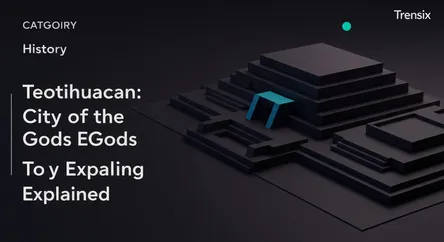History
Teotihuacan: City of the Gods Explained

Discover Teotihuacan, the massive ancient city in Mexico. Learn why this mysterious pre-Aztec metropolis continues to fascinate the world.
What is it?
Teotihuacan is a vast, ancient archaeological site located about 50 km northeast of modern-day Mexico City. Flourishing between the 1st and 7th centuries A.D., it was one of the largest and most influential cities in the pre-Columbian Americas, with an estimated population of at least 25,000. The city is characterized by its massive monuments, including the Pyramid of the Sun and the Pyramid of the Moon, connected by the Avenue of the Dead. The name Teotihuacan was given by the Aztecs centuries after the city's fall and means "the place where the gods were created." The identity of its original builders remains a mystery.
Why is it trending?
Teotihuacan remains a globally significant topic due to its status as a UNESCO World Heritage Site and one of Mexico's most visited archaeological sites. Ongoing discoveries and research continually generate new interest, as archaeologists uncover more about its complex urban planning, intricate murals, and evidence of human sacrifice. Its mysterious origins and sudden collapse around 550 CE intrigue both scholars and the public. The site's profound influence on later Mesoamerican cultures, including the Aztecs who revered it as a sacred place, keeps it relevant in historical and cultural studies.
How does it affect people?
Teotihuacan has a significant impact on modern society, primarily as a cornerstone of Mexican cultural identity and a major driver for international tourism. It provides a tangible connection to the region's ancient past, inspiring awe and curiosity about early urban life in the Americas. For researchers, it offers invaluable insights into ancient urbanism, religion, and social structures. For visitors, walking the Avenue of the Dead and climbing the pyramids is a powerful experience that fosters a deeper appreciation for the achievements of ancient civilizations and their lasting legacy on world heritage.